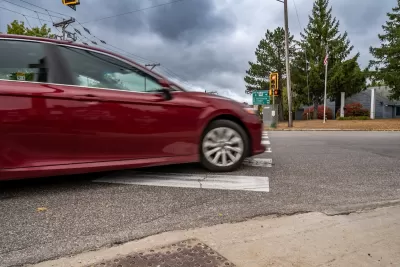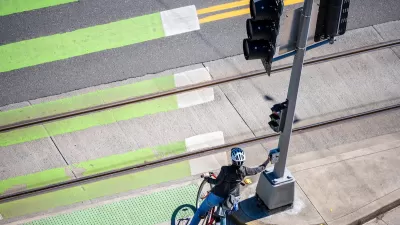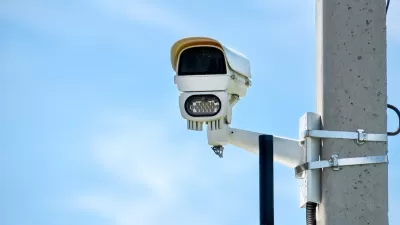Experts caution that blanket bans on right turns on red make only a slight contribution to reducing fatal crashes, and other interventions are needed to bring down traffic fatalities.

Banning right turns on red can reduce vehicle-pedestrian conflict, but “may not substantially address road safety challenges,” reports Michael Brady in Smart Cities Dive.
“Indeed, research shows that allowing right-turn-on-red leads to more conflicts between cars and pedestrians. For instance, permitting right-turn-on-red led to a 43% to 107% increase in pedestrian crashes and a 72% to 123% rise in cyclist crashes, according to a 1982 study by the U.S. National Highway Traffic Safety Administration.” However, these crashes tend to be minor and not a major contributor to traffic fatalities. Between 1982 and 1992, just 0.2% of roadway fatalities occurred at intersections with right turns on red allowed.
Experts suggest taking a more targeted approach by banning right turns only at particularly dangerous intersections to “get the most benefit at the lowest political and economic cost.”
Ultimately, right-turn bans must fit within a “bigger policy framework” that includes “[l]owering posted vehicle speed limits, instating traffic-calming measures, reducing permissive left turns and improving pedestrian and cycling infrastructure.”
FULL STORY: Right-turn-on-red bans not a ‘silver bullet’ for pedestrian safety, experts say

Montreal Mall to Become 6,000 Housing Units
Place Versailles will be transformed into a mixed-use complex over the next 25 years.

Planetizen Federal Action Tracker
A weekly monitor of how Trump’s orders and actions are impacting planners and planning in America.

DARTSpace Platform Streamlines Dallas TOD Application Process
The Dallas transit agency hopes a shorter permitting timeline will boost transit-oriented development around rail stations.

Without International Immigrants, the Rural US Population Would Be Falling 58%
Census data shows that population growth in rural areas is due in large part to international migrants.

Dead End: Nine Highways Ready for Retirement
The Freeways Without Futures report describes the nation’s most promising highway removal proposals.

Congressman Proposes Bill to Rename DC Metro “Trump Train”
The Make Autorail Great Again Act would withhold federal funding to the system until the Washington Metropolitan Area Transit Authority (WMATA), rebrands as the Washington Metropolitan Authority for Greater Access (WMAGA).
Urban Design for Planners 1: Software Tools
This six-course series explores essential urban design concepts using open source software and equips planners with the tools they need to participate fully in the urban design process.
Planning for Universal Design
Learn the tools for implementing Universal Design in planning regulations.
City of Mt Shasta
City of Camden Redevelopment Agency
City of Astoria
Transportation Research & Education Center (TREC) at Portland State University
City of Camden Redevelopment Agency
Municipality of Princeton (NJ)
Regional Transportation Commission of Southern Nevada





























